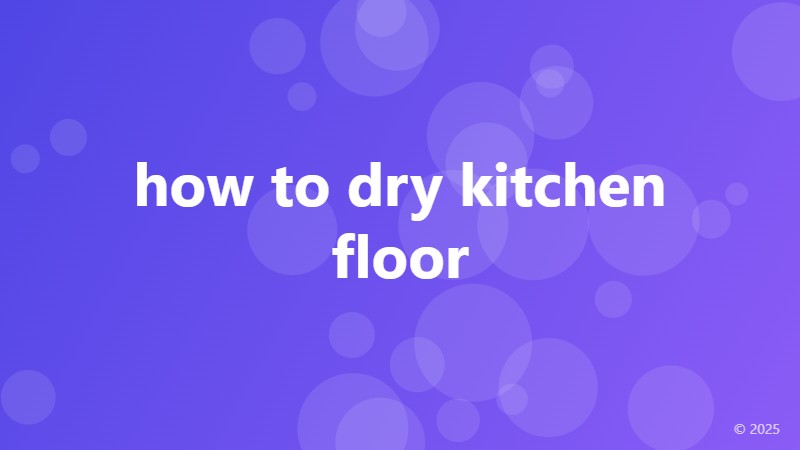how to dry kitchen floor

Why Drying Your Kitchen Floor is Crucial
Drying your kitchen floor is an essential task that is often overlooked, but it's crucial for maintaining a clean, safe, and hygienic kitchen environment. Water and moisture on the floor can lead to slippery surfaces, accidents, and even damage to your flooring material. In this article, we'll provide you with a step-by-step guide on how to dry your kitchen floor effectively.
Preparation is Key
Before you start drying your kitchen floor, make sure you have the necessary tools and materials. You'll need a mop, a bucket of warm water, a cleaning solution, and a microfiber cloth or towel. Remove any clutter, toys, or obstacles from the floor to ensure a smooth and efficient drying process.
Method 1: Mopping and Drying
Start by mopping the floor with a gentle cleaning solution and warm water. Use a microfiber mop or a string mop to clean the floor thoroughly. Make sure to change the cleaning solution frequently to prevent dirt and grime from being redeposited onto the floor. Once you've mopped the entire floor, use a clean microfiber cloth or towel to dry the floor. Start from one end of the room and work your way down to prevent water from spreading.
Method 2: Squeegee and Dry
If you have a large kitchen floor or a floor with a lot of crevices, using a squeegee can be an effective way to remove excess water. Start by squeegeeing the floor to remove as much water as possible. Then, use a microfiber cloth or towel to dry the floor. Make sure to dry the floor in sections, working from one end of the room to the other.
Tips and Tricks
To ensure your kitchen floor is completely dry, follow these additional tips:
- Use a clean and dry microfiber cloth or towel to dry the floor to prevent streaks and water spots.
- Avoid using hot water, which can damage certain types of flooring materials.
- Open windows or turn on the exhaust fan to improve ventilation and speed up the drying process.
- Use a dehumidifier to reduce moisture levels in the air and prevent water from accumulating on the floor.
Conclusion
Drying your kitchen floor is a simple yet crucial task that requires attention to detail and the right techniques. By following the methods and tips outlined in this article, you'll be able to dry your kitchen floor effectively and maintain a safe and hygienic kitchen environment. Remember to clean and dry your kitchen floor regularly to prevent accidents and damage to your flooring material.